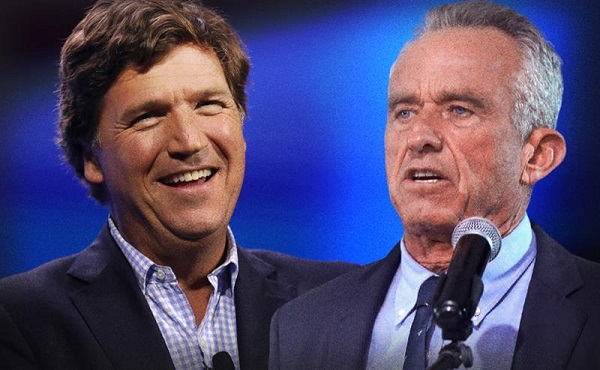Alberta
The Conventional Energy Sector and Pipelines Will Feature Prominently in Alberta’s Referendum Debate

From Energy Now
By Jim Warren
Like it or not, the supporters of conventional energy production in the West, even those who bleed maple syrup, will be best served by a substantial leave vote. A poor showing on the part of the leave camp would weaken the bargaining power of the producing provinces and the conventional energy sector in their dealings with Ottawa.
The political dust-up between the leavers and the stayers is about to commence.
The petition calling for an Alberta referendum on separation will get the required signatures. And, the Moe government in Saskatchewan may yet decide to do something similar.
And, there is a good chance the federal Liberals and their allies in the environmental movement will launch an anti-separation/anti-oil campaign in response. The Liberals need merely to reinvigorate the flag waving campaign they ran during the federal election. All that needs to change for that tactic to work is the name of the boogeyman—from Donald Trump to alienated Westerners. Government subsidized environmental organizations will help do the rest.
This will present something of a dilemma for some supporters of the conventional energy and pipeline sectors. Should they lay low, stay quiet and perhaps avoid becoming part of the controversy? Alternatively, should they face reality and admit oil and pipelines will feature prominently in the debate whether they like it or not. The federal assault on oil, gas and pipelines is after all one of the principal motivations inspiring many who wish to separate.
And, whether we like it or not, the supporters of conventional energy production in the West, even those who bleed maple syrup, will be best served by a substantial leave vote. A poor showing on the part of the leave camp would weaken the bargaining power of the producing provinces and the conventional energy sector in their dealings with Ottawa. This is one of the immutable laws of the negotiating universe. A union that gets only 20% of its members voting in favour of strike action knows it is impotent should management call its bluff.
This is not to say the leave side will need a majority vote to produce a win for the energy sector—a large minority could do nicely. The Parti Québécois’ goal of “sovereignty association” in the 1980 Quebec referendum was supported by just 40.4% of those who voted. Yet, it nevertheless added leverage to Quebec’s extortionate demands on Ottawa and the rest of Canada. Although, after the separatists garnered 49.4% of the vote in the 1995 referendum (aka Canada’s near death experience), Quebec did even better.
True, the two producing provinces on the prairies lack the electoral power of Quebec. In combination with Ontario, Quebec has been integral to Liberal success in federal elections for decades. The power of the West lies in its ability to generate a large share of Canada’s export revenues. That’s mainly why Quebec is able to count on $14 billion in annual equalization welfare. Threatening separation turns the economic importance of the West into a political weapon.
We can expect a highly divisive referendum debate–potentially far more fractious than the federal election campaign. Signals coming out of Ottawa suggest federal-provincial negotiations over conventional energy and emissions policy are about to take a nasty turn. We could be facing a perfect storm of disunity with Westerners bashing Ottawa while Ottawa denounces separatists and resumes its assault on oil, gas and pipelines.
Chances for lowering the political temperature don’t look good. The prime minister has been distancing himself from his initial pre-election pro pipeline position. Early in the election campaign Mark Carney said he would employ the emergency powers of the federal government to get new export pipelines running from the prairies to tidewater. The next week he told reporters Quebec would have the power to veto the approval of any pipeline crossing its territory. On May 14, Carney presented reporters with a word salad that seemed to be saying he would include evaluation of the potential for new pipelines along with other energy policy ideas being discussed. And, if a consensus favouring pipelines emerged, one might be built.
This is not comforting. These statements cannot all be correct at the same time. At least two, if not all three, of them, are disingenuous.
Exactly who will be included in the consensus building discussions is unclear. Will they involve meetings with the premiers of the provinces that generate huge export revenues for Canada. Will they be restricted to the emissions reduction zealots who dominate the cabinet and the Liberal caucus? Or, is it something Carney will work out at Davos when the World Economic Forum next convenes?
The Liberals and their media allies put a lot of stock in the polls once they showed the Liberals in the lead during the election campaign. They briefly acknowledged election period polling that showed 74% of Canadians support the construction of new export pipeline including 60% of Quebecers. But reporting on the growing popularity of pipelines ended after about a week when Carney’s unqualified support for a pipeline to the Atlantic coast evaporated.
Furthermore, the popular vote totals from the federal election demonstrate that Canadians’ support for the Conservatives and the Liberals was divided fairly evenly, 41.3% for the Conservatives and 43.8% for the Liberals. A slim 2.5 percentage point spread. It seems reasonable to assume many Conservative supporters outside of the prairies shared Pierre Poilievre’s strong and consistent support for conventional energy production and pipelines. The fact people in the producing provinces are not alone in seeing the wisdom of new export pipelines strengthens our position.
If the thumping the voters of Alberta and Saskatchewan gave the Liberals in the April 28 election didn’t convince the government its energy and pipelines policies have caused a national unity crisis, maybe a high vote in favour of separation will. Many people will figure this out and will vote strategically to ensure the leave side wins a respectable portion of the vote. Who would want to try to negotiate a good deal for the producing provinces and the conventional energy sector following a weak performance by the leave camp? The Liberals will claim that a big win for the stay camp shows that Albertans are happy with the status quo.
The anti-pipeline misinformation campaign is already underway. Steven Guilbeault was already at it last week. According to Guilbeault, since the Trans Mountain pipeline is not operating at full capacity we obviously don’t need any more pipelines.
Guilbeault knows full well the pipeline is running under full capacity. The reason being the residual fall-out from the $38 billion in cost overruns the government chalked up, which was in turn due to its own regulatory morass and system pains associated with issues like the poor design features built into the Burnaby terminal. The government expects oil producers to pay exorbitant shipping rates designed to rapidly recoup the embarrassing cost overruns. Producers are not prepared to lose money bailing out the government. Guilbeault also knows most producers making use of the Trans Mountain today had negotiated much lower rates with the pipeline prior to its completion.
We can expect the flow of this kind of misinformation to become a gusher in the days ahead.
One hopes there will be adults in charge of both the leave and stay camps. The cause of Western separation can be expected to attract enthusiasts from the fringes of the political spectrum. There will be crackpots and mean-spirited people cheering for both sides. Unfortunately, we need to prepare for the fact the mainstream media will focus on any loosely hinged eccentrics they can find who support separation. Radical environmentalists and climate change alarmists will be treated like selfless planet saving prophets.
Agriculture
Lacombe meat processor scores $1.2 million dollar provincial tax credit to help expansion

Alberta’s government continues to attract investment and grow the provincial economy.
The province’s inviting and tax-friendly business environment, and abundant agricultural resources, make it one of North America’s best places to do business. In addition, the Agri-Processing Investment Tax Credit helps attract investment that will further diversify Alberta’s agriculture industry.
Beretta Farms is the most recent company to qualify for the tax credit by expanding its existing facility with the potential to significantly increase production capacity. It invested more than $10.9 million in the project that is expected to increase the plant’s processing capacity from 29,583 to 44,688 head of cattle per year. Eleven new employees were hired after the expansion and the company plans to hire ten more. Through the Agri-Processing Investment Tax Credit, Alberta’s government has issued Beretta Farms a tax credit of $1,228,735.
“The Agri-Processing Investment Tax Credit is building on Alberta’s existing competitive advantages for agri-food companies and the primary producers that supply them. This facility expansion will allow Beretta Farms to increase production capacity, which means more Alberta beef across the country, and around the world.”
“This expansion by Beretta Farms is great news for Lacombe and central Alberta. It not only supports local job creation and economic growth but also strengthens Alberta’s global reputation for producing high-quality meat products. I’m proud to see our government supporting agricultural innovation and investment right here in our community.”
The tax credit provides a 12 per cent non-refundable, non-transferable tax credit when businesses invest $10 million or more in a project to build or expand a value-added agri-processing facility in Alberta. The program is open to any food manufacturers and bio processors that add value to commodities like grains or meat or turn agricultural byproducts into new consumer or industrial goods.
Beretta Farms’ facility in Lacombe is a federally registered, European Union-approved harvesting and meat processing facility specializing in the slaughter, processing, packaging and distribution of Canadian and United States cattle and bison meat products to 87 countries worldwide.
“Our recent plant expansion project at our facility in Lacombe has allowed us to increase our processing capacities and add more job opportunities in the central Alberta area. With the support and recognition from the Government of Alberta’s tax credit program, we feel we are in a better position to continue our success and have the confidence to grow our meat brands into the future.”
Alberta’s agri-processing sector is the second-largest manufacturing industry in the province and meat processing plays an important role in the sector, generating millions in annual economic impact and creating thousands of jobs. Alberta continues to be an attractive place for agricultural investment due to its agricultural resources, one of the lowest tax rates in North America, a business-friendly environment and a robust transportation network to connect with international markets.
Quick facts
- Since 2023, there are 16 applicants to the Agri-Processing Investment Tax Credit for projects worth about $1.6 billion total in new investment in Alberta’s agri-processing sector.
- To date, 13 projects have received conditional approval under the program.
- Each applicant must submit progress reports, then apply for a tax credit certificate when the project is complete.
- Beretta Farms has expanded the Lacombe facility by 10,000 square feet to include new warehousing, cooler space and an office building.
- This project has the potential to increase production capacity by 50 per cent, thereby facilitating entry into more European markets.
Related information
Alberta
Alberta Independence Seekers Take First Step: Citizen Initiative Application Approved, Notice of Initiative Petition Issued

Alberta’s Chief Electoral Officer, Gordon McClure, has issued a Notice of Initiative Petition.
This confirms a Citizen Initiative application has been received and the Chief Electoral Officer has determined the requirements of section 2(3) of the Citizen Initiative Act have been met.
Approved Initiative Petition Information
The approved citizen initiative application is for a policy proposal with the following proposed question:
Do you agree that Alberta should remain in Canada?
The Notice of Initiative Petition, application, and statement provided by the proponent are available on Elections Alberta’s website on the Current Initiatives Petition page.
As the application was received and approved prior to coming into force of Bill 54: Election Statutes Amendment Act, the Citizen Initiative process will follow requirements set out in the Citizen Initiative Act as of June 30, 2025.
Next Steps
- The proponent must appoint a chief financial officer within 30 days (by July 30, 2025).
- Once the 30-day publication period is complete and a chief financial officer has been appointed, Elections Alberta will:
- issue the citizen initiative petition,
- publish a notice on the Current Initiatives Petition page of our website indicating the petition has been issued, specifying the signing period dates, and the number of signatures required for a successful petition, and
- issue the citizen initiative petition signature sheets and witness affidavits. Signatures collected on other forms will not be accepted.
More information on the process, the status of the citizen initiative petition, financing rules, third party advertising rules, and frequently asked questions may be found on the Elections Alberta website.
Elections Alberta is an independent, non-partisan office of the Legislative Assembly of Alberta responsible for administering provincial elections, by-elections, and referendums.
-

 Business14 hours ago
Business14 hours agoRFK Jr. says Hep B vaccine is linked to 1,135% higher autism rate
-

 Alberta1 day ago
Alberta1 day agoAlberta Independence Seekers Take First Step: Citizen Initiative Application Approved, Notice of Initiative Petition Issued
-

 Crime1 day ago
Crime1 day agoNational Health Care Fraud Takedown Results in 324 Defendants Charged in Connection with Over $14.6 Billion in Alleged Fraud
-

 Censorship Industrial Complex21 hours ago
Censorship Industrial Complex21 hours agoGlobal media alliance colluded with foreign nations to crush free speech in America: House report
-

 Health1 day ago
Health1 day agoRFK Jr. Unloads Disturbing Vaccine Secrets on Tucker—And Surprises Everyone on Trump
-

 Bruce Dowbiggin1 day ago
Bruce Dowbiggin1 day agoThe Game That Let Canadians Forgive The Liberals — Again
-

 International20 hours ago
International20 hours agoRFK Jr. tells Tucker how Big Pharma uses ‘perverse incentives’ to get vaccines approved
-

 Business2 days ago
Business2 days agoCanada’s loyalty to globalism is bleeding our economy dry





